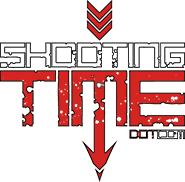Learning how to find your draw length is very important due to its effect on one’s form. If the bow has too long of a draw length and the person will be outstretched, holding arm locked; pushing arrows to that side during the shot. Too short of a draw and you will over stress the holding arm’s elbow while the drawing arm fights to settle in to its anchoring point.
How to find your draw length
There are many different methods on how to calculate your draw length. One method is to use a draw length tool which is a recurve bow with a permanently attached measurement arrow. The archer draws back the arrow while someone checks to see what the measurement is at the front of the arrow rest/riser. This is a decent method if the archers form is perfect. We prefer the wingspan method. The wingspan method is a method that doesn’t take form into consideration and is normally right in the ballpark of the proper draw length.
Finding Draw Length Method #1 – Wingspan Measurement
Stand normally and outstretch your arms, palms forward. Arms should be in line with each other. Have a friend measure from tip of middle finger to tip of middle finger and record measurement. Divide this number by 2.5 and this will be your starting draw length. If you plan on shooting a D-Loop, you can subtract a half inch from the number.
The draw length indicated by the wingspan formula is a great starting point. Shoot at this draw length and if you have proper form and feel like adjusting longer or shorter, by all means, do it. Experimentation at different draw lengths is key if you want to find the sweet spot that will sky rocket your scores.
Finding Draw Length Method #2 – Outstretched Arm
The second method you can use is the “outstretched arm” method. In this method, have the archer stand erect and out stretch his or her holding arm. have them shape the holding hand as if they were holding a bow. Measure from the palm of the holding hand back to the anticipated string nocking point at full draw. You will now have to subtract 1.5 inches to allow for holding arm flex.
This measurement will take you from the anchor to the grip (with slight flex in the holding arm) at full draw. The grip is normally vertically inline with the berger hole, so according to AMO draw length protocol, you’ll have to add 1.75 inches for your overall draw length.
This method is not as consistent as the first method, but if done properly, it will get you a great starting point for a proper draw length.
Advanced Draw Length Suggestion
To find your ultimate draw length, get your hands on a bow with a cam or cams that allow you to change
the draw length in 1/4 to 1/2 inch increments. Shoot multiple 300 rounds (or record your accuracy by your own method) and study how you performed at the different draw lengths.
When you reach your best scores and find your “golden draw length”, have a friend measure from the crotch of your grip to the string at the nocking point when you are at full draw and record it. This is your best true draw length. This “true draw length” will vary between manufacturers on bows which claim to have the same draw length. Finding your golden draw length may mean the difference between wins and losses at archery tournaments.
Be sure to brush up on these other bow tech basics.

